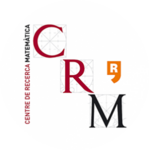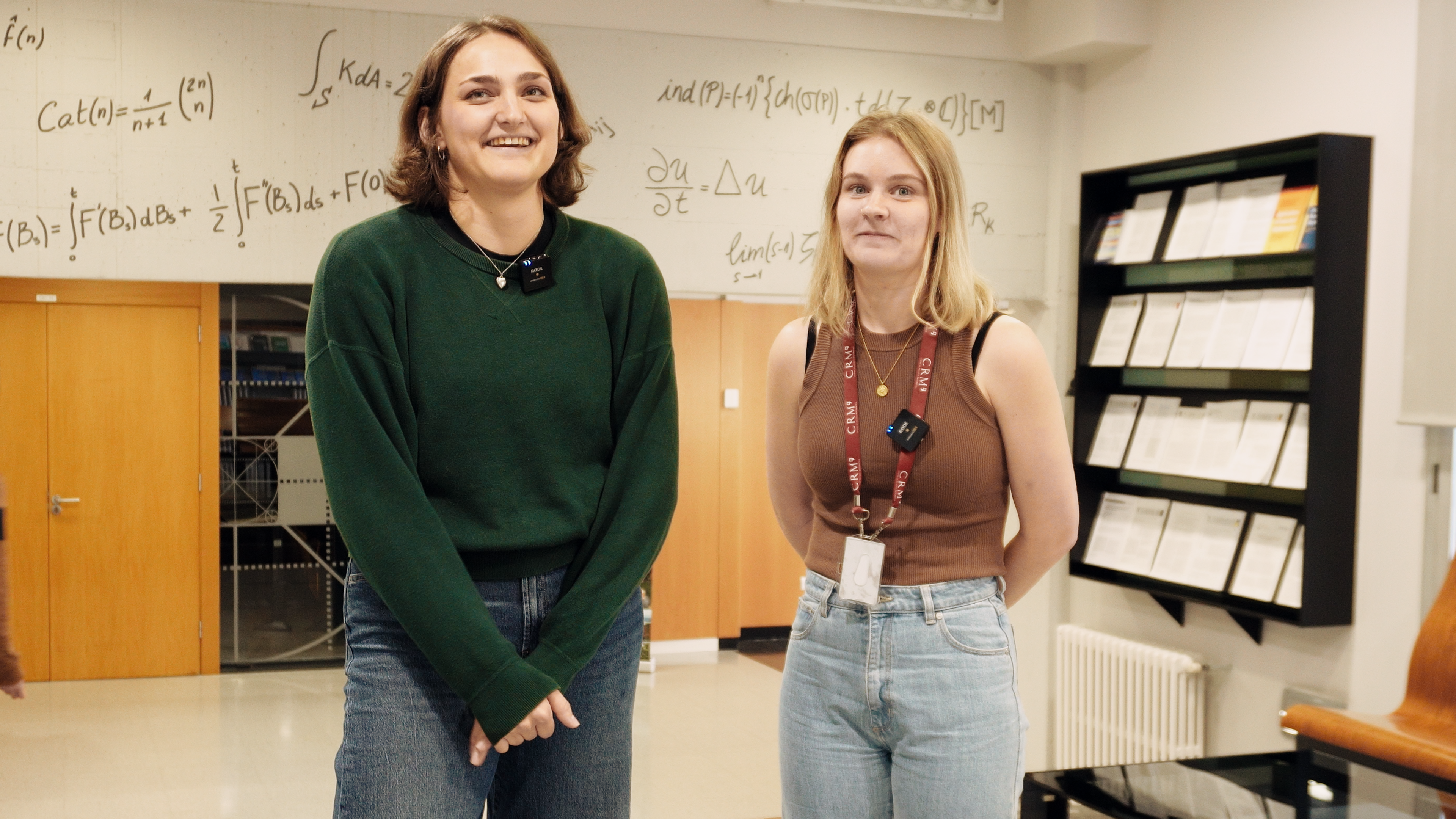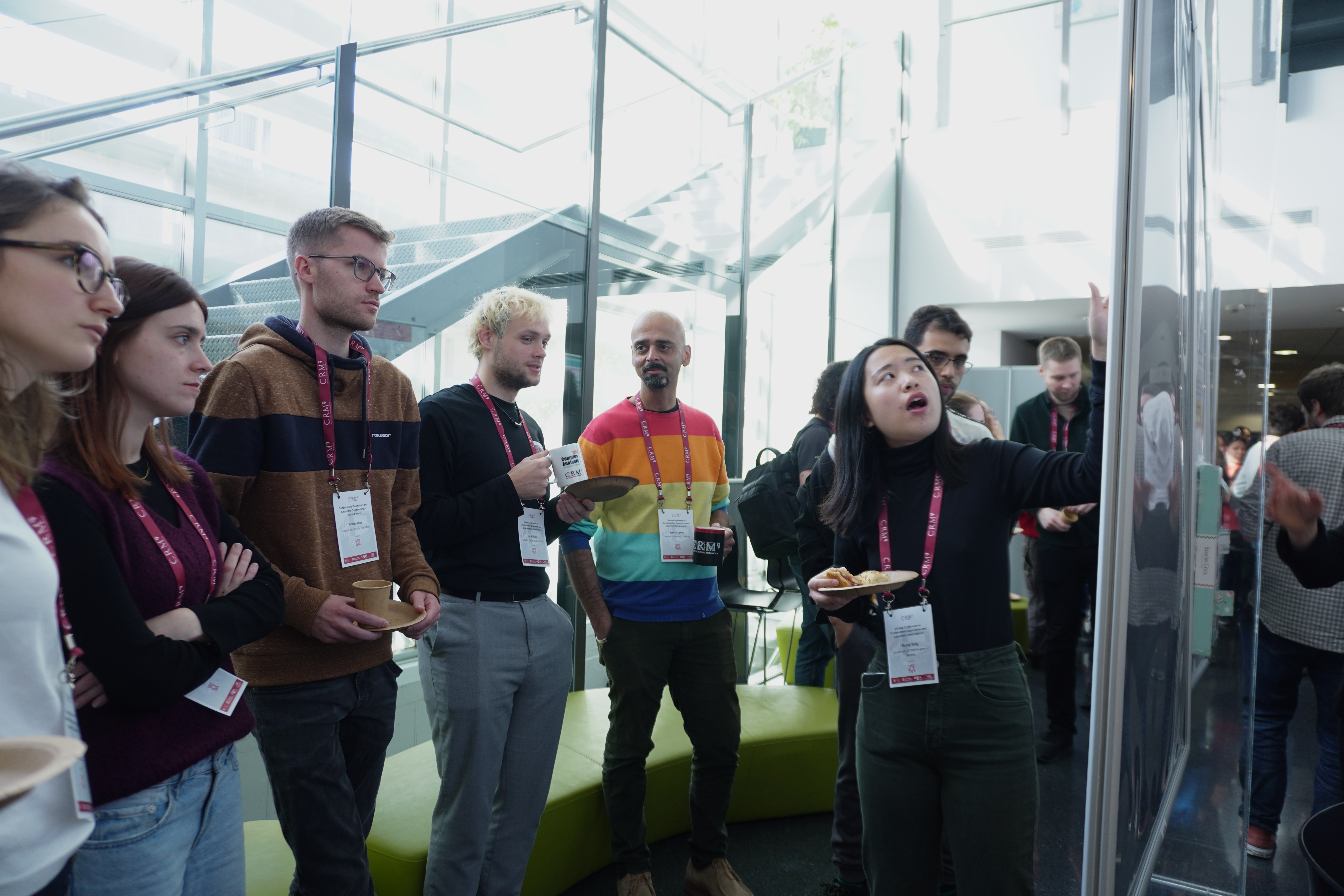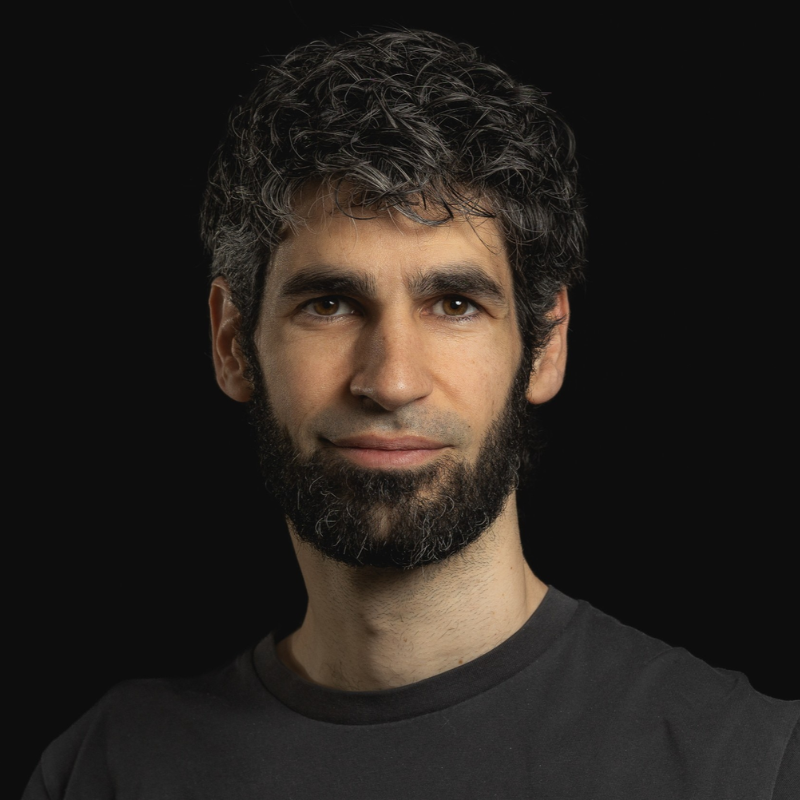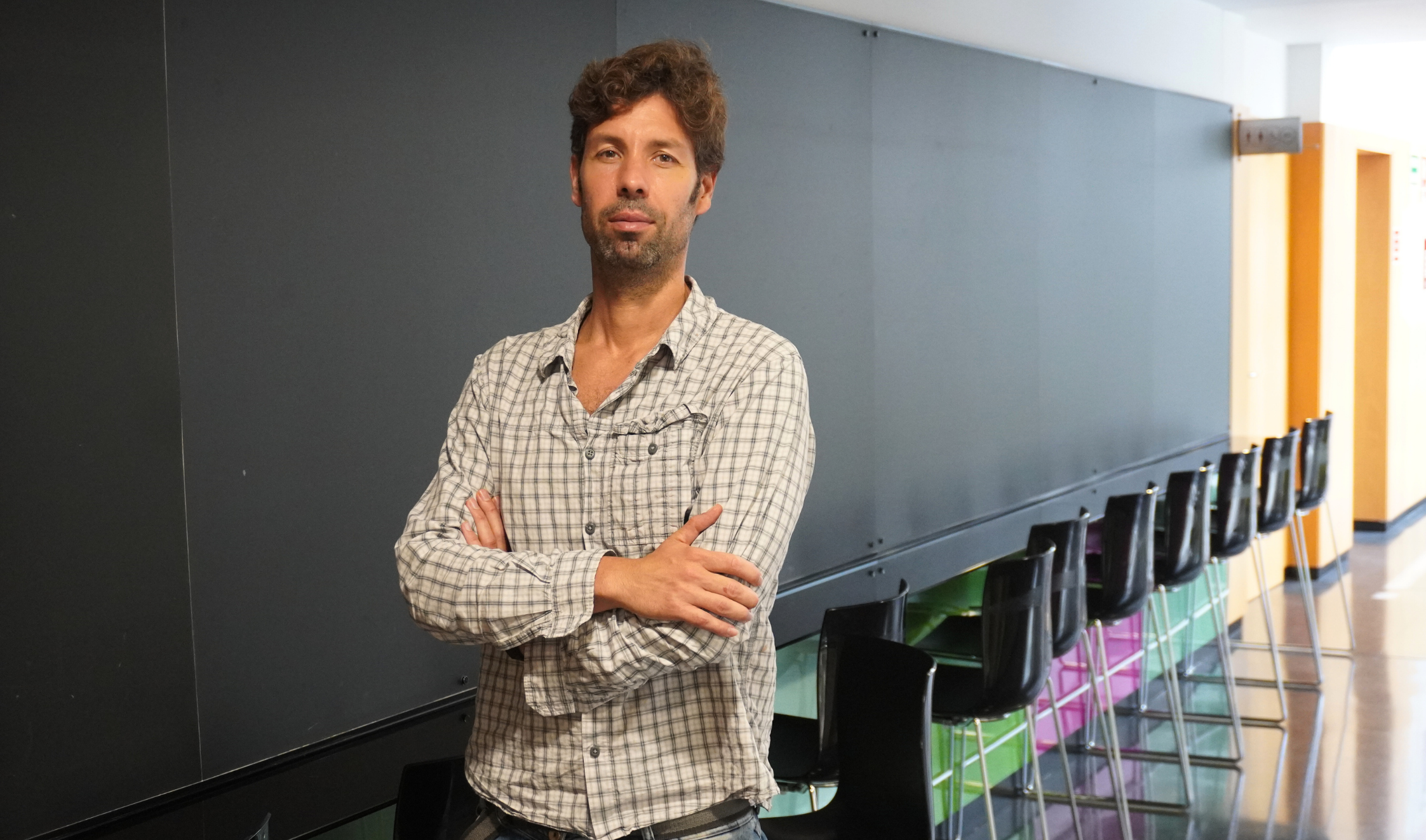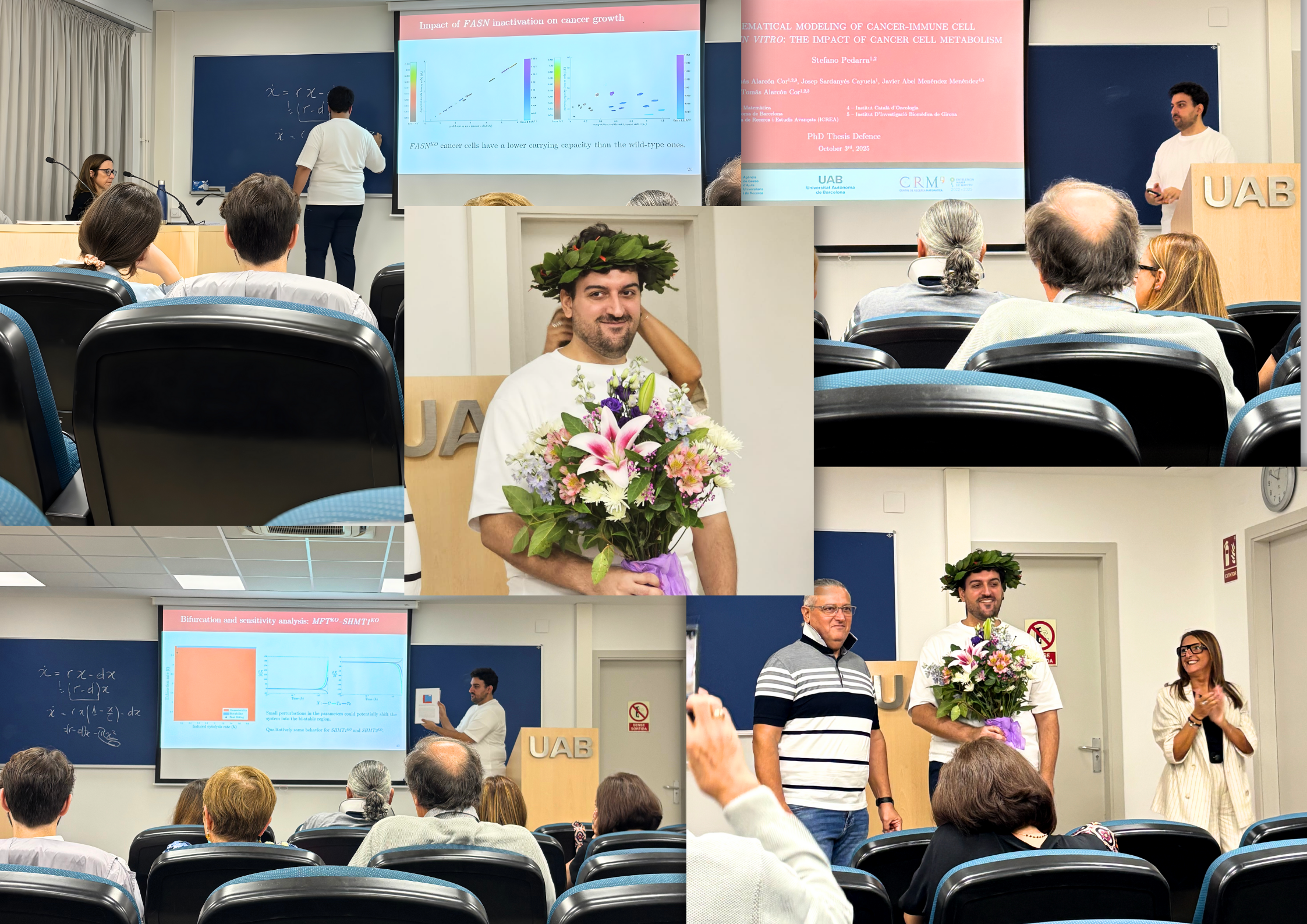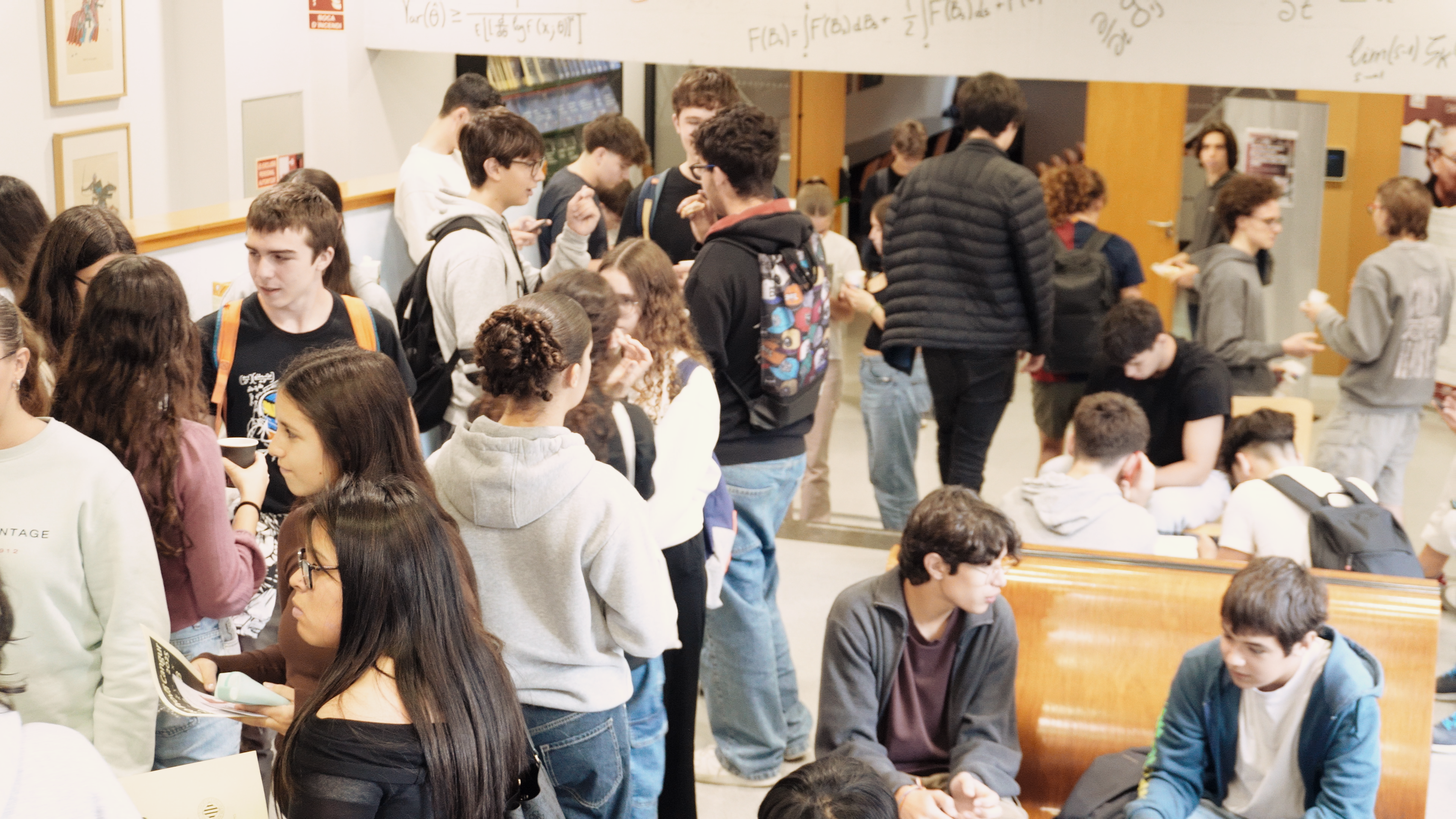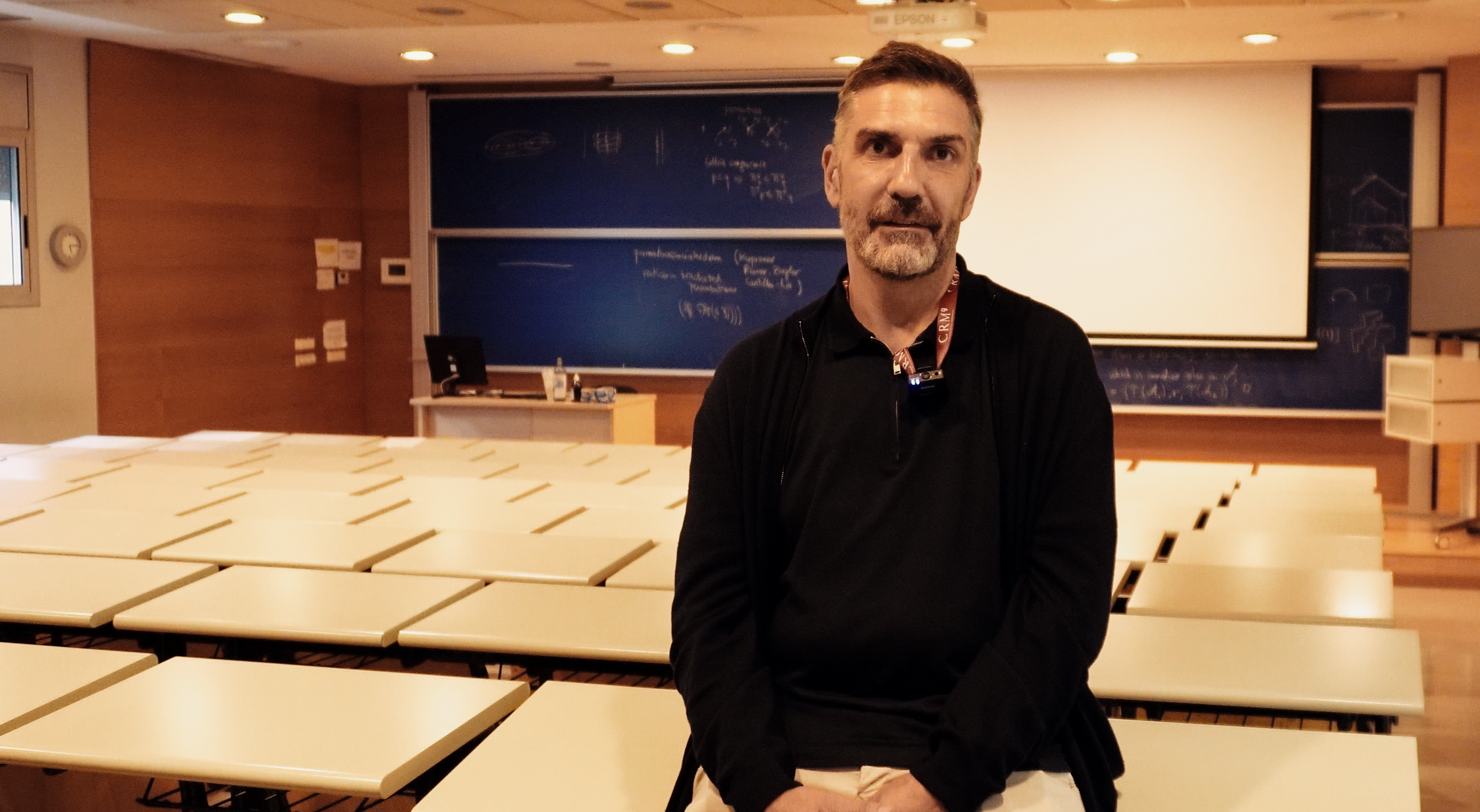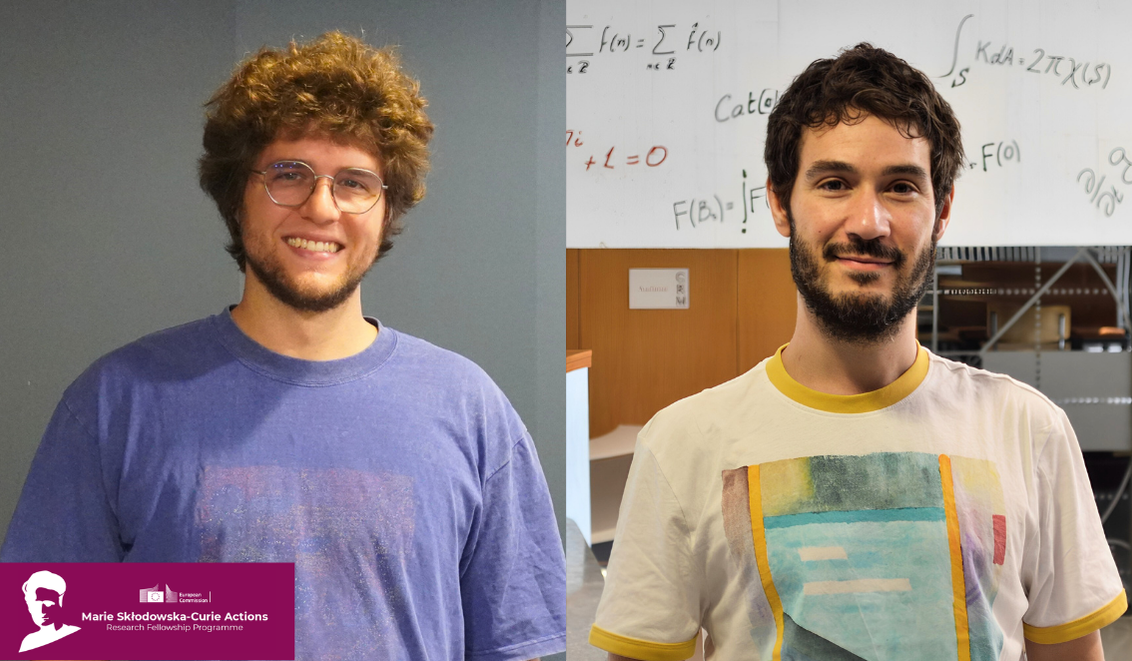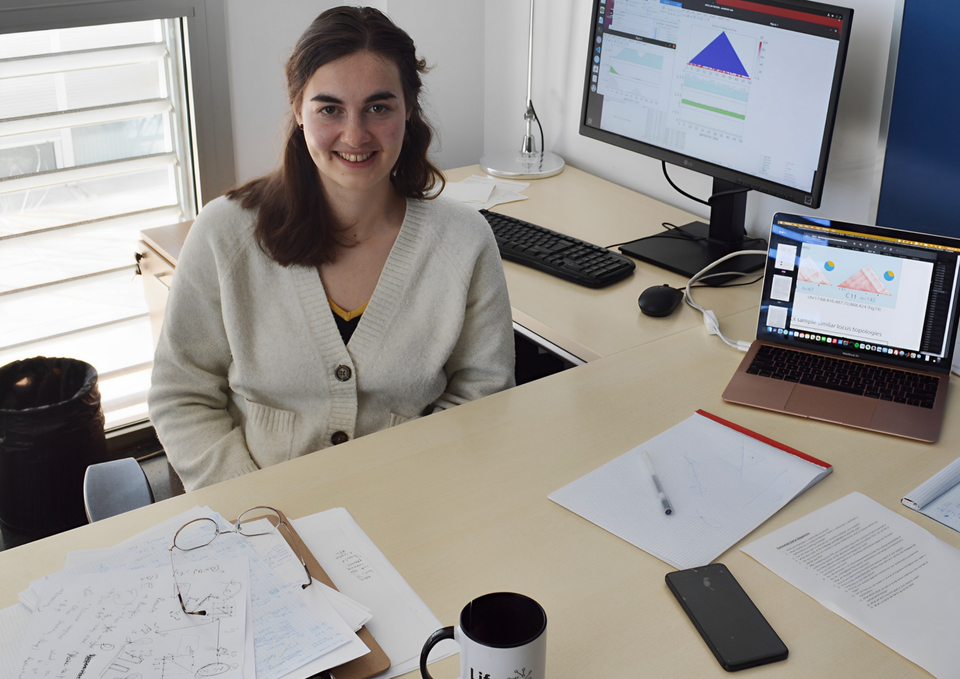
In celebration of the International Day of Women and Girls in Science, we got the opportunity to interview Dr. Daria Stepanova, a postdoctoral researcher in the Mathematical and Computational Biology group at the Centre de Recerca Matemàtica (CRM). She earned her PhD in 2022 at the CRM, under the guidance of Tomás Alarcón (ICREA, CRM), Helen Byrne and Philip Maini from the Mathematical Institute, University of Oxford. Her thesis work focused on the complex behaviours of endothelial cells in angiogenesis, the process of blood vessel growth.
Following her doctoral studies, Dr. Stepanova conducted a research stay at the Mathematical Institute of the University of Oxford, where she investigated cellular interactions within intestinal crypts and the mechanisms of mutation fixation that can lead to polyps and cancer. She continued her career at the Laboratorio Subterráneo de Canfranc (LSC), where she provided mathematical support for the Hyper-Kamiokande (HK) experiment, analysing variations in critical pressure for the covers of photomultipliers, that will be used at the surface of the HK detector.
Currently, Dr. Stepanova has returned to the CRM for her second postdoctoral position, where she collaborates with Tomás Alarcón, Josep Sardanyés, and Helen Byrne on epigenetic regulation and 3D chromatin structure.
Were you interested in mathematics at school?
I was not particularly interested in mathematics to start with, to be honest. I wanted to become a sea captain, I wanted to sail. When I was in 9th grade, which would correspond to the year before the batxilletrato in Spain, it was the year women were admitted to study in the Navy Academy in Saint Petersburg. I was studying in a junior academy where you could learn a little bit about how ships operate, and I liked it a lot.
When it was time to apply to the Navy Academy, since it was not like a regular application to access the university, I didn’t have to take any additional exams. I took the standard exams in language, mathematics, and informatics. So, I passed the exams, but in the end, I couldn’t enter the academy because my vision was not 100% perfect.
As a result, since I hadn’t taken any extra exams, I had to move on with the exams that I had already done; my choice was limited to mathematics or programming. I applied to enter just one place, Saint Petersburg University, which is not what you usually do (you at least apply to five different places). Finally, after a bit of a complication with my application, I got accepted to study applied mathematics.
When did you decide to come to Barcelona to do your master’s degree?
I had a supervisor at Saint Petersburg University who was interested in modelling but not in a classical sense. He was the one who introduced me to the work of Helen Byrne (Mathematical Institute, University of Oxford). He was giving me papers from her and I got interested in modeling applications in biology. When the time came to apply for a master’s programme, I applied to several modelling programmes abroad.
The one I finally chose was called MathMods, which is an Erasmus Mundus, where you do different semesters in different countries. When you apply, you must choose in which country you will do the last year of the master’s degree. In my case, I originally chose Italy. However, since there were too many applications to go to Italy, I was asked by the coordinator of the programme in Italy to choose between my first and second choices. And he gave me only one hour to decide.
My second choice was Barcelona, and since I had already been to Italy, I decided to go see something else. Thus, I did a semester in Italy, another semester in Germany, and the last two semesters here in Barcelona.
During your master’s, you also did an internship here at CRM. How did that come to happen?
One of my teachers during my master’s year in Barcelona was Prof. Lluís Alsedà, the director of the CRM. When I got to the moment of choosing my master’s project, I looked at the research that was done at the CRM, since I liked the place. That’s how I ended up doing my master’s project with Prof. Tomás Alarcón. When I started talking with him, he gave me a couple of papers to read, and I noticed that Helen Byrne, whose work I knew for a long time before that, was on the list of authors.
At that time, were you already considering continuing your training and pursuing a PhD?
Not at this point. You’ve probably noticed by now that I tend to go with the flow in some of the decisions I make. After my master’s degree, I wasn’t sure about what to do. My family is a family of teachers, so doing a PhD was not an obvious path for me. It was Tomás who motivated me to continue, sort of like the current that pulls the rock at the bottom of the river. Thus, what he did to convince me was to introduce me to Helen Byrne, to explain to her the project that we had done for the master’s. Helen had always been a role model to me, especially being a woman who is brilliant in her field but also has a family. I was hooked after meeting her.
In that sense, how important is it to have a role model that is closer to you?
The career of a researcher is very challenging, so having someone whom you can relate with, someone who has managed to find that balance between work and life, is very important. Also having Tomás motivating me and helping me on a personal level was crucial to keep me going. That’s how I ended up doing my PhD with them and Prof. Philip Maini (Mathematical Institute, University of Oxford). Without having the right people around, and working with supportive people, most likely I wouldn’t have continued with a research career. Me being here is also their achievement.
Can you describe your experience in providing mathematical support for the Hyper-Kamiokande experiment?
Dr. Carlos Peña, the director at Laboratorio Subterráneo de Canfranc (LSC), wanted to hire me as a postdoctoral researcher. At the time, I was in the impasse between finishing my PhD contract and defending my thesis. There was a lot of bureaucracy involved in being able to renew my residence permit, and I couldn’t even get a job that was not labelled as ‘researcher’ because my work permit didn’t allow me to.
Since they had a project to collaborate on the Hyper-Kamiokande project, I got the opportunity to apply to work with them as a modelling researcher. Essentially, there is this Cherenkov detector in Japan which is being built to study neutrinos from different sources. It consists of a big tank filled with water, located under a mountain, where they want to detect the secondary reactions caused by the collision of particles. To detect those reactions, they cover the surface of the tank with detectors called photomultipliers, which look like big bulbs, so when a particle passes through, they can multiply the signal.
The Spanish collaboration in the project aims to solve an issue they had with hydrostatic pressure. In the previous iteration, the Super-Kamiokande, one of the photomultipliers mounted on the structure, imploded, causing a chain reaction that, in turn, made more than 70% of the rest of the bulbs crack as well. For the Hyper-Kamiokande, which, if compared with the previous iteration, is considerably bigger, they wanted to avoid this.
What they decided to do is to build metal covers to protect the detectors, so in the event of one of them imploding, the rest would not be affected. My role in the experiment was to do the analytical estimate for the stability of these covers showing the differences between different geometries and taking into account not only static forces but also inertia during the implosion.
That’s very different from the topic of your PhD thesis.
I wanted to work on biological experiments in the Canfranc lab, but at the time, they could only hire me for this project. Since my master’s degree is in mathematical modelling, I have enough experience to do mathematical modelling anywhere. I will have to learn something, but the basis is already there. We had courses on financial modelling, for example. The social and biological applications are only one of the possible applications of mathematical modelling. But you can do modelling about just anything, such as was the case with the Hyper-Kamiokande experiment.
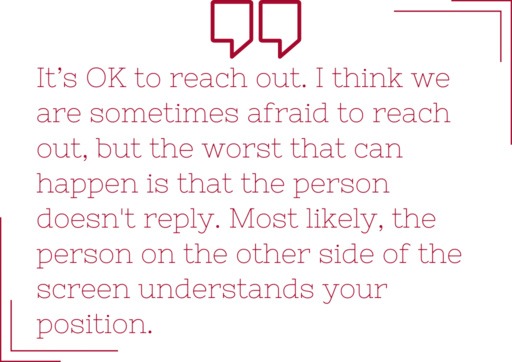
You are also conducting an experiment in Canfranc this year. Can you tell us a little bit more about it?
The current theory says that radiation is harmful. The damage you get increases linearly with the radiation, and there is no threshold. This theory is called linear no-threshold (LNT), and according to it, even a little radiation exposure is going to cause damage, and that damage is also accumulative. We are exposed to radiation all the time; we breathe in the radon coming from the walls, and we are getting all the sun’s radiation… huge amounts of radiation. One of the fastest particles to reach the Earth, for instance, is called muon. These particles are very potent, have a lot of energy and contribute to a lot of the ionising radiation we are exposed to on a daily basis.
Thus, to conduct experiments where you block out all this radiation, you need underground labs protected by a lot of rock. For this type of experiment, they also use ventilation systems to reduce all the radon. If you put some biological samples in this environment, with very reduced radiation, what you would expect to observe, following the linear no-threshold theory, is less damage, but that’s not what you see. There’s actually an increase in DNA damage and other harmful consequences for life, so these experiments do not confirm the theory that says that radiation is always harmful.
It seems that background radiation is also beneficial since we have adapted to it evolutionarily, which is logical, but we do not have an explanation for this.
That’s what you are trying to find out?
Yes, but we had to find someone who had the expertise to conduct the experiment. Together with Tomás Lázaro (UPC) and Tomás Alarcón, we found a person, Assoc. Prof. Miguel González Blanco (DNA Repair & Genome Integrity group, Center for Research in Molecular Medicine and Chronic Diseases (CIMUS), Universidade de Santiago de Compostela), who works on DNA damage. We invited him to give a talk during a modelling retreat in Canfranc, and arranged a meeting to present my hypothesis to him. He was interested in collaborating.
He works with different strains of yeast and multiple mutations. By changing the mutant strain of the cell, we can investigate different effects of the low background radiation. The idea is to see where the low background radiation influences the system. And it doesn’t have to be in one place. Most likely, it’s a combination of things.
Right now, we are still waiting to be able to conduct the experiment (space and time for experiments in underground labs is very limited). In science, things take time. At some point, when we have the results, we will do the modelling with the data obtained. We have several preliminary ideas, but we don’t want to do too much in advance because otherwise, we will be biased. We have to wait to see the experimental data first.
In a way, thanks to being part of the Hyper-Kamiokande experiment, I had a chance to know how the lab in Canfranc works and apply to conduct our experiment there.
And focusing on your current work at CRM, as a postdoctoral researcher. What are you currently working on?
Normally, what you do is you get interested in one topic, and then you develop it. In my case, as I said before, I’ve tended to go with the flow in each step of my career. When I finished my time at Canfranc, since I had already submitted my experiment proposal, it got accepted, and I was not interested in taking on another task from the Hyper-Kamiokande project, I was ready to move on. I wanted to remain in Spain, and the most interesting things happening in Spain for my research interests are happening in the CRM. However, the only position that was open at the time was to work on epigenetics, which meant that I had to switch to a new topic again. The projects are different, but at the end of the day, the modelling techniques are essentially the same.
To broadly explain what we are doing, imagine you have a strand of the chromatin1, where the double helix is wrapped around the nucleosomes2. To fit this strand, which is very long, inside a cell nucleus, what you have to do is pack it. This defines whether the chromatin is accessible or not for transcription factors3. In the DNA sequence, for a certain property to manifest itself, it is not enough to have the gene encoded; you need to have it accessible so it can be read and expressed. Since the strand is folded in three dimensions, the gene you want to read may not be accessible.
Generally speaking, we want to investigate the dynamics of certain epigenetic marks that can be added to the chromatin and define whether the gene is accessible or not. On top of this, we are going to consider the chromatin architecture, meaning the way the chromatin is folded inside the nucleus. These epigenetic marks we consider have local feedback; when they are in contact in a 3D-folded polymer of chromatin, they can influence each other.
The other thing we want to look at is a hypothesis proposed by David Sinclair regarding ageing, which is related to cells losing their identity. When cells specialize, they start to express certain genes relevant to their cell type. You need this epigenetic landscape to define what genes are going to be expressed or not. What happens, for example, in cancer and with ageing is that you have what we call erosion of the epigenetic landscape, which means that the cell loses its identity. It starts expressing different genes until it cannot perform the function it’s supposed to perform. We also want to see how this erosion happens.
And what are your interests regarding future projects?
The thing is, I don’t know how to close projects. I’ve been starting and working on different projects which have nothing to do with each other except for myself. There’s always future work to do, there are future avenues for further research. In the future, my idea is to stop doing what other people tell me to do and finally find my research line, which is very difficult to do. If I stay in academia, I need to think about what my topic is, you cannot jump from one place to another for the rest of your career. This is just not going to work in terms of the projects and the funding. You have to specialise.
To wrap up this interview, do you have any advice you would like to share with young researchers, especially young women interested in a career in mathematics?
I would emphasise the importance of working with people who support you. Prioritize finding the right collaborator over selecting a project, as projects are subject to change. People are more important than projects. A highly productive supervisor may not always be the ideal choice if their commitments limit their availability. You may have a brilliant supervisor, but you won’t benefit from it because you won’t be working with that person. For me having Tomás, who was accessible and available for meetings and discussions, was very important. Eventually, if I stay in academia, I will try to be the right person for someone else.
Also, it is OK to reach out. I think we are sometimes afraid to reach out, but the worst that can happen is that the person doesn’t reply. Most likely, the person on the other side of the screen understands your position. Whether it’s inquiries about positions, papers, potential collaborations, or just to learn more about their work, reaching out can open doors to valuable opportunities and insights.
_________________________________________________
- Chromatin: a complex of DNA, RNA, and proteins found in the nucleus of eukaryotic cells that condenses to form chromosomes during cell division. It serves both structural and functional roles, packaging the long strands of DNA into a more compact, manageable form to fit within the cell nucleus, and also plays a critical role in regulating gene expression.
- Nucleosome: the fundamental structural unit of chromatin in eukaryotic cells, consisting of a segment of DNA wrapped around a core of eight histone proteins.
- Transcription factors: proteins that bind to specific DNA sequences to control the flow of genetic information from DNA to mRNA. They play a crucial role in regulating gene expression, making them essential for various biological processes including cell growth, differentiation, and response to environmental stimuli
Subscribe for more CRM News
|
|
CRM CommPau Varela & Mariona Fucho
|
BAMB! 2025: Participants Return to the CRM for Research Stays
In October 2025, the Centre de Recerca Matemàtica hosted Josefine Meyer (ISTA) and Cate MacColl (University of Queensland) for a month-long research stay following their participation in the BAMB! Summer School. Despite studying vastly different subjects, from...
Connecting Shapes, Patterns, and Ideas: the Closing Conference on Combinatorial Geometries and Geometric Combinatorics
During five days, the CRM hosted the Closing Conference of the MDM Focused Research Programme on Combinatorial Geometries & Geometric Combinatorics. The event featured plenary talks, contributed sessions, and posters on topics from matroids and polytopes to...
Xavier Ros-Oton among the 65 most cited mathematicians in the world
ICREA professor at the Universitat de Barcelona and CRM affiliated researcher Xavier Ros-Oton appears on Clarivate's Highly Cited Researchers 2025 list, which this year reinstates the mathematics category after two years of exclusion.Citations are a strange way to...
New Horizons for H- and Γ-convergence: From Local to Nonlocal (and viceversa)
The researchers Maicol Caponi, Alessandro Carbotti, and Alberto Maione extended the H- and Γ-convergence theories to the setting of nonlocal linear operators and their corresponding energies. The authors were able to overcome the limitations of classical localization...
Diego Vidaurre joins the CRM through the ATRAE talent programme
Diego Vidaurre has joined the Centre de Recerca Matemàtica through the ATRAE programme, bringing his expertise in modelling spontaneous brain activity across multiple data modalities. His work focuses on understanding how the brain’s intrinsic dynamics shape...
El CRM a la Setmana de la Ciència: una ruta entre dones, formes i pensament
El CRM va participar en la 30a edició de la Setmana de la Ciència amb una ruta guiada que va combinar les biografies de dones matemàtiques amb obres d'art del centre, connectant ciència, història i creació artística.El 12 de novembre, el Centre de Recerca Matemàtica...
Stefano Pedarra Defends his PhD Thesis on the Interaction between Tumour Cells and the Immune System
Stefano Pedarra has completed his PhD at the Centre de Recerca Matemàtica with a thesis exploring how tumour-cell metabolism shapes the immune system’s ability to fight cancer. His work brought mathematics and biology into direct conversation, from building models to...
Els estudiants participants a la prova de preselecció de Bojos per les Matemàtiques visiten el CRM
La prova de preselecció de Bojos per les Matemàtiques va reunir estudiants de tot Catalunya a la UAB i al CRM, amb presentacions a càrrec de Montse Alsina, presidenta de la Societat Catalana de Matemàtiques, Núria Fagella, degana de la Facultat de Matemàtiques i...
Jordi Mompart highlights the role of artificial intelligence in sport at the XIII GEFENOL-DIFENSC Summer School
The XIII GEFENOL-DIFENSC Summer School gathered over thirty researchers from across Europe to explore how statistical physics helps explain complex phenomena in biology, ecology, networks, and social systems. In his closing lecture, Jordi Mompart (UAB) examined how...
Critical Slowing Down in Genetic Systems: The Impact of Bifurcation Proximity and Noise
An international collaboration including researchers from the Centre de Recerca Matemàtica (CRM) has shown that when several bifurcations occur close to one another, their interaction can dramatically amplify critical slowing down effect - the progressive slowdown of...
Two CRM researchers begin their Marie Skłodowska-Curie fellowships
Gustavo Ferreira and Tássio Naia, CRM postdoctoral researchers and new Marie Skłodowska-Curie fellows. Gustavo Ferreira and Tássio Naia, who joined the CRM in 2023 through the María de Maeztu programme, have started their Marie Skłodowska-Curie postdoctoral...
Matroid Week at CRM: A Collaborative Dive into Combinatorial Geometries
From October 13 to 17, 2025, the CRM hosted Matroid Week, a research school on combinatorial geometries and matroid theory. Courses by Laura Anderson and Geoff Whittle explored intersection properties and structural emergence in matroids. The event fostered deep...

